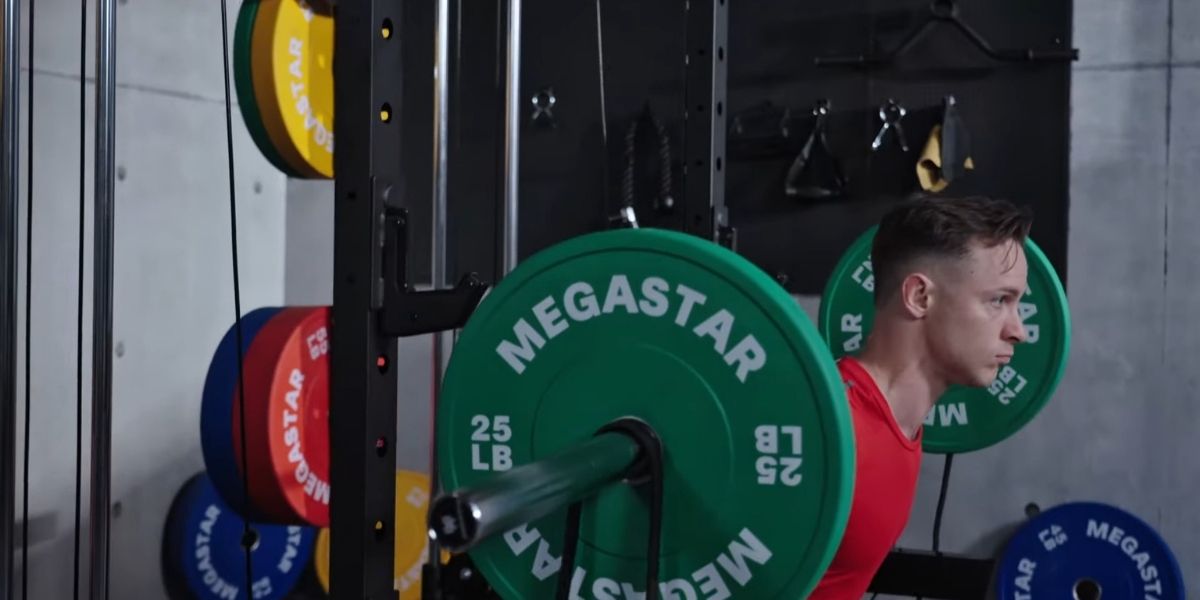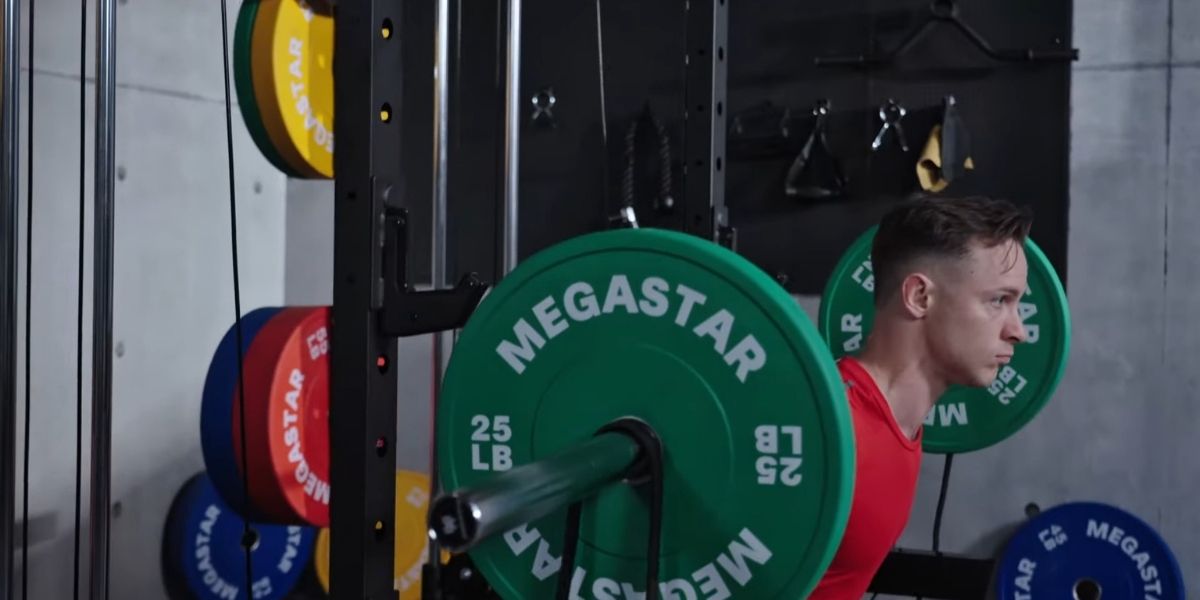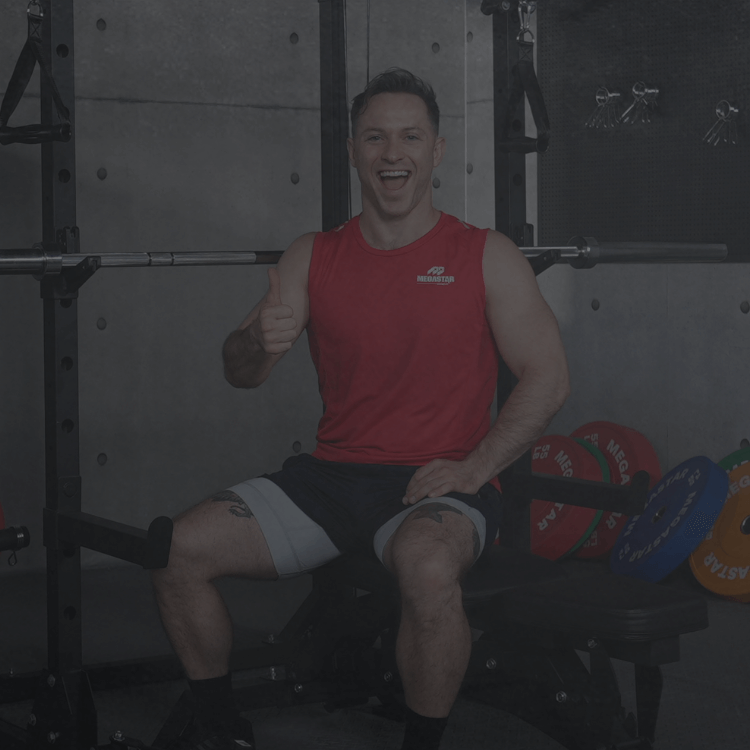You're not alone if you're looking at a power rack and wondering how high to position the safeties or where the J-cups go. Most beginners know that a rack is "for squats and bench," but they don't seem to know the details, such as pin height, walkout spacing, bench alignment, and safe fails. You may train with confidence and safety thanks to this guide's step-by-step setup instructions, straightforward cues for the big lifts, and fast remedies for common issues.
First, let's clarify what a power rack is compared to its common alternatives:
|
Feature |
Power Rack |
Squat Stand |
Smith Machine |
|
Main Use |
Squats, Bench Press, Overhead Press, Pull-ups |
Squats, Bench Press (less common) |
Guided Squats, Bench, and other exercises |
|
Safety |
Excellent. Full cage with safety pins/straps. |
Limited. May have spotter arms, but no cage. |
Good. Bar is on a track and can be locked. |
|
Versatility |
Excellent. Allows free-weight movement for dozens of exercises. |
Good. Primarily for barbell work. |
Poor. Fixed-path movement, unnatural bar path. |
|
Solo Training |
Ideal. Designed for safe solo lifting. |
Risky. Bailing on a squat is difficult. |
Good. Easy to lock the bar. |
Set Up Your Power Rack the Right Way
A perfect lift starts with a perfect setup. Spending 30 seconds on this before you add weight will save you a lot of trouble later.
Adjusting Your J-Cups (Bar Hooks)
J-cups (or J-hooks) are the small hooks that hold the barbell. Setting them at the right height is crucial for a comfortable and safe lift-off.
- For Squats: Set the J-cups so the barbell is about 2-3 inches below your shoulder height when you're standing tall. You should be able to get under the bar with a slight knee bend, and then stand up straight to unrack it without having to go up on your toes.
- For Bench Press: Lie down on the bench. The J-cups should be high enough that you can unrack the bar with your arms almost fully extended, but low enough that you don't slam the hooks when you're pressing. You should be able to comfortably unrack and rerack it without losing your shoulder position.
Setting Your Safety Pins or Straps
These are your safety net. Never lift inside a power rack without them. These horizontal bars (or heavy-duty straps) are designed to catch the barbell if you fail a rep.
The Golden Rule: Set your safety pins 1-2 inches below the lowest point of your lift.
- For Squats: Go to the very bottom of your squat without the bar. Have a partner check, or feel for the spot that is just below your bottom position.
- For Bench Press: Lie on the bench and arch your back slightly (as you would for a press). Set the pins just below your chest height at this position. You should be able to touch your chest with the bar, but if you relax, the bar will rest on the pins, not on you.

Aligning Your Bench for Presses
A common mistake is setting the bench too far forward or too far back.
- The Goal: When you lie down, your eyes should be directly under the barbell. This creates the safest and most efficient path for unracking the bar.
- Pro Tip: Once you find the perfect spot, use a small piece of masking tape or a chalk marker on the floor to mark where the feet of your bench should go. This saves you setup time for every single workout.
Ensuring Rack Stability
If your power rack isn't bolted to the floor, it can tip, especially if you're reracking heavy weight aggressively.
- Bolt it down to the floor or a lifting platform (this is the most secure method).
- If you can't bolt it down, use the rack's rear weight plate holders to load it with heavy plates. This adds a counterbalance and makes it much more stable.
Learn the Core Exercises
A power rack is the home base for the most effective compound lifts. Here’s how to use it for the "big four."
The Barbell Squat (Back Squat)
- Setup: Set your J-cups (shoulder height) and safety pins (bottom of squat).
- Unracking: Duck under the bar and place it evenly across your upper back/traps. Get your grip, pull your shoulder blades together, and brace your core. Stand up straight to lift the bar off the J-cups.
- The Walkout: Take small, deliberate steps. A "three-step walkout" is best: Step 1: One foot back. Step 2: Other foot back to match. Step 3: A small shuffle to get your stance width. That's it. Don't waste energy.
- Reracking: After your set, walk all the way forward until the barbell makes contact with the rack's uprights. You'll feel it. Then, and only then, bend your knees and squat down until the bar rests securely in the J-cups.
The Bench Press
- Setup: Align your bench. Set J-cups (arm's length) and safety pins (chest height).
- Positioning: Lie down with your eyes under the bar. Plant your feet firmly on the floor. Grab the bar, squeeze your shoulder blades together, and pull them "down" into the bench. This creates a stable shoulder platform.
- Unracking: Lift the bar out, lock your elbows, and bring it forward so it's balanced directly over your chest/sternum.
- Reracking: After your last rep, lock your elbows, move the bar backward until it's over the J-cups, and then lower it gently.
The Overhead Press (OHP)
- Setup: Set the J-cups at your upper chest or shoulder height. You'll be lifting inside the rack.
- Unracking: Get under the bar in a "front rack" position (bar resting on your front shoulders). Stand up to unrack it and take one step back.
- The Lift: Brace your core, glutes, and quads. Press the bar straight overhead, pushing your head "through the window" once the bar clears your face.
- Low Ceiling? If your ceiling is too low, you may have to perform this exercise outside the rack. If you do, you can use "spotter arms" (an accessory) for safety.
Pull-Ups and Inverted Rows
- Pull-Ups: Most power racks have a built-in pull-up bar at the top. This is perfect for building your back and biceps.
- Inverted Rows: Don't have pull-ups yet? No problem. Set an empty barbell in the J-cups (or on the safety pins) about waist-high. Lie on the floor underneath it, grab the bar, and pull your chest up to the bar while keeping your body in a straight line.
Start a Simple Power Rack Workout Routine
Ready to lift? The best way to start is with a simple, proven full-body routine. You'll train 3 days a week, (e.g., Monday, Wednesday, Friday) to allow for recovery.
A Beginner 3-Day Full-Body Routine
Alternate between Workout A and Workout B each time you go to the gym.
Workout A
- Squat: 3 sets of 5 reps
- Bench Press: 3 sets of 5 reps
- Inverted Rows: 3 sets of as-many-reps-as-possible (AMRAP)
Workout B
- Squat: 3 sets of 5 reps (Yes, you squat every workout!)
- Overhead Press: 3 sets of 5 reps
- Pull-Ups: 3 sets of AMRAP (or use a resistance band to assist)
(Note: Deadlifts are often performed outside the rack, but you can use the safety pins to perform "Rack Pulls," which are a partial deadlift.)
Conclusion

Learning how to use a power rack comes down to three things: set it up right, lift with simple cues, and keep safety automatic. Start by dialing J-cup heights, setting your safeties for squat and bench, and marking your bench and hole numbers. Practice one or two safe fails, then follow the three-day template and add small amounts of weight each session. With a stable rack, clear settings, and a short checklist, you’ll train harder, safer, and more consistently from day one.
If you’re ready to take your training up a notch, consider the Megastar Fitness home gym Power Rack. It is specifically designed for home gyms, with high-quality materials, a small footprint, and comprehensive safety features. With the guide above on how to use the power rack, installing it with proper J‑cup height, safety pin/strap settings, and bench alignment becomes straightforward.
FAQ
Can I use a power rack safely without a spotter?
Yes! That’s exactly what a power rack is designed for. By setting the safety pins or straps correctly, you can train heavy squats and bench press alone without the risk of getting pinned. Always test your fail setup with an empty bar before loading up.
Do I need to bolt my power rack to the floor?
Not always. If your rack wobbles or shifts during use, bolting is ideal. But if that’s not an option, you can stabilize it with plate storage, heavy sandbags, or place it on thick rubber mats to reduce movement and noise.
How do I know if the barbell is hitting the safeties too soon?
If you hear or feel the bar touching the safeties during normal reps, they’re probably set too high. Lower them by one hole and test again. They should only catch the bar during a failed lift, not on every rep.







